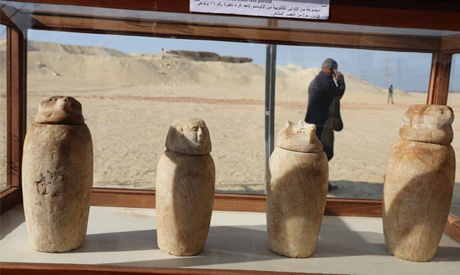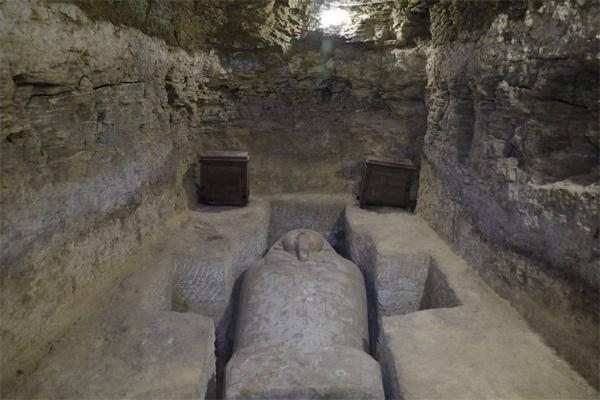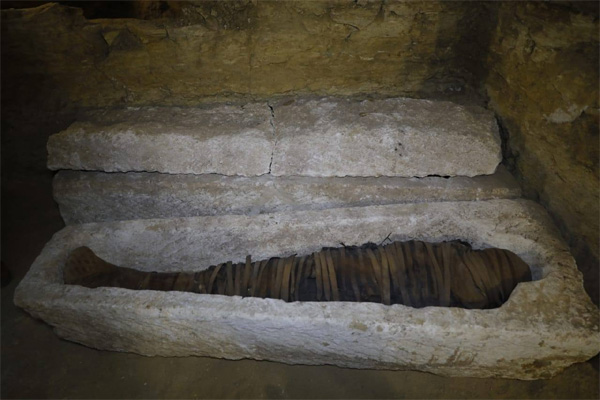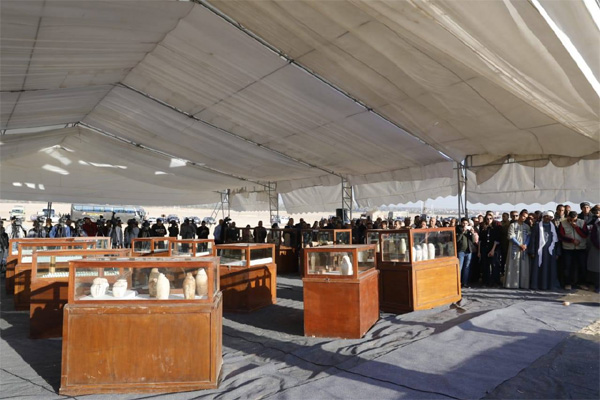Egyptian archaeologists unveil ancient tombs, 2,500-year-old artifacts

Khaled El-Enano, Minister of Tourism and Antiquity, Egypt announced discovered the discovery of the communal tombs for high priests in the Tuna el-Gabal district of Minya, marking the Ministry of Tourism and Antiquities ‘ first archaeological find in 2020.
The communal tombs were dedicated to high priests of the god Djehuty and senior officials in the fifteenth nome of Upper Egypt and its capital, Ashmunin.
Minister El-Enany said that since 2018, several discoveries have been made in Minya governorate, including a cachette of mummies, as well as several tombs full of sarcophagi and funerary collections including jewellery, ushabti figurines, and funerary masks.
“Minya is set to be put on Egypt’s tourist’s map for its distinguished archaeological sites,” El-Enany said.
The discovery was made by an archaeological mission headed by Mustafa Waziri, the secretary-general of the Supreme Council of Antiquities.

Waziri explained that the ongoing work by the archaeological mission has uncovered 16 tombs with about 20 sarcophagi and coffins of various shapes and sizes, including five anthropoid sarcophagi made of limestone and engraved with hieroglyphic texts, and five well-preserved wooden coffins.
Some of the coffins are decorated with the names and titles of their owners and were discovered alongside more than 10,000 ushabti figurines made of blue and green faience, most of which are engraved with the titles of the deceased.
The mission also found more than 700 amulets of various shapes, sizes, and materials, including heart scarabs, amulets of the gods, and amulets made of pure gold, such as the “Ba” and an amulet in the shape of a winged cobra.
Many pottery vessels of different shapes and sizes, which were used for funerary and religious purposes, were also unearthed along with tools for cutting stones and moving coffins, such as wooden hammers and baskets made of palm fronds.
The discovery also includes eight groups of painted canopic jars made of limestone with inscriptions showing the titles of their owner, who bore the title of the singer of the God Thoth.
Two collections of four canopic jars made of alabaster for a woman and a man were also unearthed, as well as stone dough without any inscriptions representing the four sons of Horus.
Waziri said that one of the stone sarcophagi belongs to the son of Psamtik, who took the title of the head of the royal treasury. He bore many titles, the most important of which were the priest of Osiris and Nut.

The second sarcophagus belongs to Horus and has a scene depicting the goddess Nut spreading her wings above the chest, and below it is inscriptions revealing the deceased’s titles, including the title of royal treasurer. Also discovered was a sarcophagus of Epy with three vertical lines of hieroglyphic inscriptions showing the names and titles of the deceased.
The sarcophagus of the Djed of Djehuty Iuf ankh, which is made of well-polished limestone, is considered one of the most important coffins discovered during this season due to the titles inscribed on the sarcophagus lid – that of royal treasurer and bearer of seals of Lower Egypt and the sole companion of the king.

The fifth sarcophagus has hieroglyphic inscriptions showing the surnames of the deceased, the most important of which is the title of “the assistant.”
It is worth mentioning that during its previous works, the mission discovered 19 tombs containing 70 stone coffins of various sizes and shapes.






